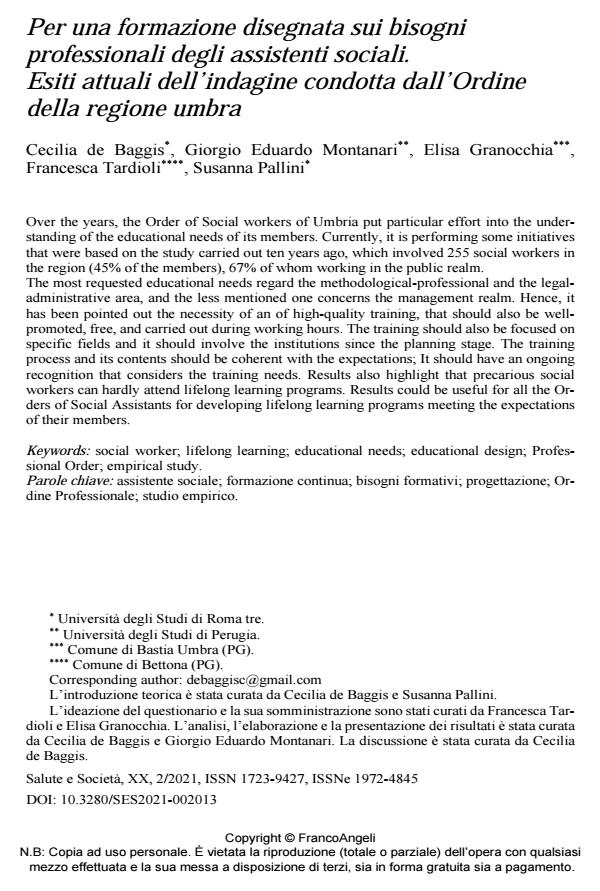Per una formazione disegnata sui bisogni professionali degli assistenti sociali. Esiti attuali dell’indagine condotta dall’Ordine della regione umbra
Journal title SALUTE E SOCIETÀ
Author/s Cecilia de Baggis, Giorgio Eduardo Montanari, Elisa Granocchia, Francesca Tardioli, Susanna Pallini
Publishing Year 2021 Issue 2021/2
Language Italian Pages 17 P. 184-200 File size 335 KB
DOI 10.3280/SES2021-002013
DOI is like a bar code for intellectual property: to have more infomation
click here
Below, you can see the article first page
If you want to buy this article in PDF format, you can do it, following the instructions to buy download credits

FrancoAngeli is member of Publishers International Linking Association, Inc (PILA), a not-for-profit association which run the CrossRef service enabling links to and from online scholarly content.
Over the years, the Order of Social workers of Umbria put particular effort into the under-standing of the educational needs of its members. Currently, it is performing some initiatives that were based on the study carried out ten years ago, which involved 255 social workers in the region (45% of the members), 67% of whom working in the public realm. The most requested educational needs regard the methodological-professional and the legal-administrative area, and the less mentioned one concerns the management realm. Hence, it has been pointed out the necessity of an of high-quality training, that should also be well-promoted, free, and carried out during working hours. The training should also be focused on specific fields and it should involve the institutions since the planning stage. The training process and its contents should be coherent with the expectations; It should have an ongoing recognition that considers the training needs. Results also highlight that precarious social workers can hardly attend lifelong learning programs. Results could be useful for all the Orders of Social Assistants for developing lifelong learning programs meeting the expectations of their mem-bers.
Keywords: Social worker; lifelong learning; educational needs; educational design; Profession-al Order; empirical study.
Cecilia de Baggis, Giorgio Eduardo Montanari, Elisa Granocchia, Francesca Tardioli, Susanna Pallini, Per una formazione disegnata sui bisogni professionali degli assistenti sociali. Esiti attuali dell’indagine condotta dall’Ordine della regione umbra in "SALUTE E SOCIETÀ" 2/2021, pp 184-200, DOI: 10.3280/SES2021-002013